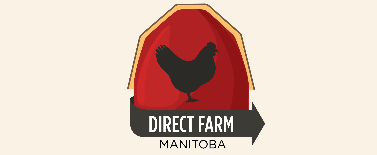by Eric Rempel
In last week's column I suggested that, rather than merely celebrating the productivity of our conventional food production model, we also compare that model with the alternative – the organic model. We may find the organic model has more to offer than expected.
To that end, let's look at phosphate. Phosphate is essential to life. In order for land to produce abundantly, the plants growing there need to be able to access adequate phosphate. In nature this has not been a problem. Plants take their nutrients from the soil. The plants die or are eaten by animals. The animals defecate and ultimately die. The minerals that were taken up by the plant return to the soil to be taken up by subsequent plants. We call this a cycle, and because it is a cycle, it is sustainable.
Agricultural producers have always known that if an area is farmed (ie crops are grown and produce removed) the farmed area will gradually become less productive. Even with no scientific understanding of what was happening, they knew that this decline in productivity could be reversed by the addition of manure.
About 100 years ago science identified what was happening in that field – the plants were removing minerals, notably N, P, and K, without replacing. This discovery made industrialized agriculture possible. This knowledge, coupled with the ability to harness oil energy, made industrialized food production possible following WWII.
In the industrialized model, the producer identifies the minerals that are below optimal in the soil (usually N,P, and K), purchases them and adds them to the soil. The P and K comes from mines, and the N comes from natural gas. All of these raw materials are in limited and diminishing supply. This model is not sustainable. Like it or not, we will need to find an alternative way sooner or later.
The main reason there is limited interest in alternatives is that there is no financial incentive to look for alternatives. The pricing of mined phosphate reflects only the cost of mining, processing and shipping. Pricing does not consider that a limited supply is being depleted.
Some organic producers are driven by economics, but on the whole they are driven by ideology. Most of these producers (and supporting researchers) are acutely aware of the unsustainable nature of the industrialized model, and are aggressively looking for alternatives.
These producers do not augment soil mineral deficiencies with chemicals. In that regard they are like farmers 100 years ago, but that is where the similarity ends. These farmers, on the whole, take a keener interest in the science that affects their production than conventional farmers. They are acutely aware of the many soil organisms that populate their soil. They seek to monitor these organisms and to nurture them. Wherever possible, they return removed plant nutrients to the soil. They have found that there are soil organisms that convert unavailable phosphate rack to plant available phosphate.
I have little doubt that there is much more to be discovered, but I am convinced that the sustainable way of maintaining our stock of essential P lies in the organic direction. We do well to encourage organic creativity both with our shopping dollar and government policy.
 Tuesday, July 5, 2016 at 9:00AM
Tuesday, July 5, 2016 at 9:00AM 

